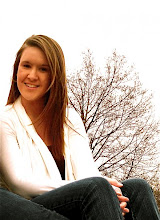The lowercase letter 'a' is considered to be a double-storey with a plain final and plain terminal or possibly a beak stroke terminal. The bowl of the 'a' is higher than most lowercase letters of this font.
The lowercase letter 'd' has an ascender that reaches cap height and is completely flat. There is no terminal to this letter and it sits on the baseline without descending below. The counter of the letter looks like a backwards capital 'D'.
The letter 'G' does not have a spur. The bowl of the letter is at cap height.
The lowercase letter 'g' is considered to be a double-storey with a closed tail. The ear of the 'g' is flat and does not have a serif at all. The link is weaker and longer than most other fonts. The bowl is lower and the counter is a perfect circle.
The letter 'M' has two flat apexes and both terminals are obviously sans serif. The apex of the letter reaches the the cap height and does not go below the base line.
The letter 'Q' has a tail that goes below the base line and the counter is a perfect circle. The bowl of the letter reaches the cap height and goes all the way to the base line.
The lowercase letter 'x' reaches just above the x-height line and there are flat apexes and flat terminals. The counter that is formed creates an arrow like figure without the indentations. In other words it looks like for different triangles facing one another.
The letter 'R' pretty much has one straight leg and another that is slightly curved. The crotch that is created is formed by the loop and the right leg connecting to that loop, not to the left leg. There are terminals that are sans serif and no ascenders. The counter that is created forms the shape of the capital letter 'D'.
The lowercase letter 't' has a ascender that is 'roman' with a sharp and refined serif. The letter does not go below the base line and the cross bar is just right underneath the cap height.
The number 4 has a flat apex and the cross bar crosses directly in the middle of the number. The number goes all the way from the cap height down to the base line without ands serifs.
The question mark is very unique. The dot is a fully enclosed circle and the curve of the question mark kind of has a handwriting-derived tapered serif at the top of it while the end of it comes to a sharp point.
The stroke width in all of these letters when they are just normal font is normal. And when looking at all of the capitol and lowercase letters, there are no other unique letters that I can see.

nicely done
ReplyDelete